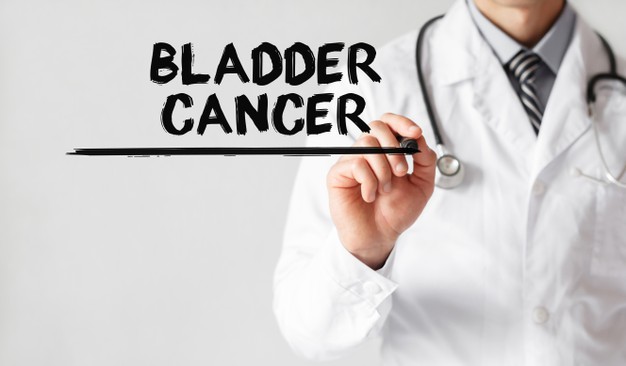There are plenty of female urological problems which affect women and they need to be treated by recognized physicians. Specialized doctors in the case of incontinences, urinary tract infection, voiding dysfunction, surgery for pelvic prolapse, other minimally invasive surgery techniques. The list of female urological problems is listed below. Every patient needs individual attention and a predesigned treatment plan based on the symptoms she would be dealing with. Each of them would ensure cure, optimum hospital stay and definitely a better quality of life.
- Incontinence- The loss of bladder control which is a common embarrassing condition for females, with urine leakage while coughing or sneezing along with an urgent need to urinate and increased frequency. Urinary incontinence is an inevitable consequence of aging and this female urological problem needs immediate attention from your physician. Although for most women, certain lifestyle changes or medications may ease the condition of discomfort, there are other types that need proper diagnosis before treatment. Some of them being stress incontinence, urge incontinence, overflow incontinence and functional incontinence.
- Interstitial cystitis–Interstitial cystitis is commonly known as bladder pain syndrome (BPS), is a serious issue regarding the bladder, The patient develops pain in the bladder area resulting in pressure during the release of urine. The BPS is quite a common female urology problem. Along with pain if there are symptoms of urinary tract issues that prevail for over 6 weeks, without any infections, it has to be treated by a physician to be cured of the syndrome. These symptoms could vary from person to person, in the sense that the pain could be mild to severe, the pain may not stay but reoccur in course of time, or it may just continue to be there. Since such a situation can affect your sex life or your loved ones, or also have numerous other complications such as irritable bowel syndrome, fibromyalgia, it is neccessary to get treated for the same at the earliest.
- Overactive bladder –Healthy Scheduling trips to the toilet plays a crucial role in dealing with overactive bladder(OAB). There are a few points that need to be noted, that can offer a cure to the embarrassing and annoying problem of overactive bladder, healthy habits and exercises, healthy diet choices and weight control, appropriate drug decisions.
Methods that help in relieving OAB The ways in which this female urology problem is solved are as follows–
Various exercises, Anticholinergic medicines such as oxybutynin, dicyclomine and fesoterodine can control the root cause behind OAB, developing healthy habits such as quitting smoking or choosing beverages wisely, following a healthy diet, hence taking care of weight issues, consult a urologist before you opt for any drugs, exercises or food options, absorbent pants and catheterization may be required in some cases of OAB.
There is no instant cure for OAB, different methods and strategies have to be tried to control the situation. Scheduling trips to the toilet helps in dealing with OAB
- Pelvic organ prolapse- A condition of female urology when one or more organs in the pelvis slip down from their normal position and bulge into the vagina. This may include the uterus, bowel, bladder or top of the vagina. There is enough pain and discomfort although it is not life threatening. The best way to improve the condition of pelvic organ prolapse are the pelvic floor exercises, lifestyle changes and sometimes medications. The symptoms include heaviness around the lower tummy and genitals, dragging discomfort inside vagina, feeling of something coming down into the vagina, bulge or lump coming out of the vagina, discomfort or numbness during sex, feeling of incontinence and leakage of urine while coughing or sneezing.
- Pelvic pain – This is a condition where there is pain in the lowest part of the abdomen or pelvis. The pain is sometimes sudden and severe and a female urologist needs to be met. Along with pain there could be other symptoms like vaginal bleeding, fever, vaginal discharge with a foul odour. The common causes for pelvic pain could be endometriosis- a chronic pelvic inflammatory disease, bacterial infection of the womb, fallopian tubes or ovaries, often followed by gonorrhoea infection which would need immediate treatment with a course of antibiotics.
- Sexual dysfunction – Yet another female urology problem is there are issues in sexual response, pain while achieving an orgasm, reduced desire for sex with partner. These problems can actually strain a relationship between two people. This condition in females is medically referred to as sexual dysfunction. The factors that can cause such a condition could be physical- medical conditions such as cancer, kidney failure, multiple sclerosis, heart disease,or medications such as antidepressants, blood pressure, antihistamines, and chemotherapy drugs. Sometimes there could be hormonal imbalances during menopause leading to lower levels of estrogen production in the body resulting in decreased blood flow to the pelvic region. Other reasons could be psychological and social such as worries of pregnancy, sexual abuse, or being a new mother. Some common causes noticed are if there is a disturbance in emotions, experiences, beliefs, lifestyle or relationship itself. Some known symptoms are low sexual desire, sexual arousal disorder, orgasmic disorder or sexual pain disorder.
- Sexually transmitted diseases – Medically termed as STD, are usually infections that are transmitted during sexual contact. Some common STDs in females are Chlamydia, Gonorrhea, HPV, genital herpes and Zika virus. Since most of them are bacterial infections, they can be treated with a course of antibiotics. There are some STDs like HIV or chronic hepatitis B infections which do not have a cure, although medications may be given to manage the situation. Some complicated STDs are the pelvic inflammatory disease(PID) and infertility. It has been found that condoms can decrease the spread of infections leading to STDs. Counseling of high-risk individuals, early diagnosis and treatment of the infections could help prevent STDs from spreading.
- Urinary tract infections – Among female urological problems, the urinary tract infections occur more often in women, and it affects the urinary bladder and urethra. A type of bacteria by the name Escherichia coli(E.coli) causes UTIs, and it is found in the gastrointestinal tract. Some common symptoms are strong urge to urinate, burning sensation while urinating, frequent, foul smelling urine that passes out in small quantities, pelvic pain around the pubic bone. The different types of UTIs in females are- acute pyelonephritis(kidney), cystitis)bladder), urethritis(urethra). Some commonly listed causes for UTIs in females are- anatomy of females(shorter urethra), sexual activity, birth control agents, menopause. Some other risk factors are – urinary tract abnormalities(at birth), blockages in the urinary tract(kidney stones), suppressed immune system(diabetes or other diseases), catheter use(after hospitalization with neurological problems), urinary procedure. Any of tye mentioned factors could be a cause for UTI in females.



